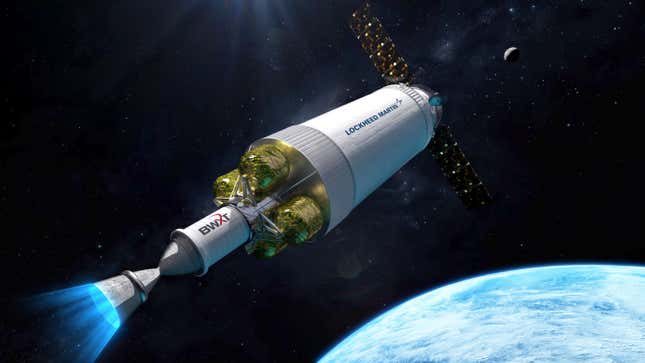
Nuclear powered spacecraft could be the pinnacle vehicle of this century’s space race. Concepts and designs for reactor-powered rockets have existed for more than 50 years, but have never progressed beyond the experimental stage. Despite ambitions to boldly go where no man has gone before, America’s latest attempt at nuclear propulsion is set to take over the new opponent in space, the People’s Republic of China.
The latest nuclear rocket project kicked off in 2023 when NASA and DARPA commissioned Lockheed Martin to a $499 million contract to build the Agile Cislunar Operations demonstration rocket. DRACO, a very catchy acronym, will be about 49 feet long and 17.7 feet in diameter to fit on the Vulcan Centaur rocket that will lift it off the surface. The Centaur will soon be the launch vehicle for the Boeing Starliner. Ars Technique explained the case for DRACO that the US Space Command presented to Congress:
DARPA’s website states that it has always had a unique mission to invest in breakthrough technologies for national security. What does a nuclear-powered spacecraft have to do with national security? The military’s perspective was suggested by General James Dickinson, an officer in the U.S. Space Command, in his testimony before Congress in April 2021.
He said that “Beijing is pursuing space superiority through space attack systems” and cited intelligence gathered on the Shijian-17, a Chinese satellite equipped with a robotic arm that can be used to “attack other satellites.” That may sound ridiculous, but it was enough to get the green light for a nuclear spacecraft.
The appeal of nuclear rockets is efficiency. They are twice as efficient as traditional chemical rockets, because they only need to carry hydrogen as fuel and do not need an oxidizer to create ignition in the vacuum of space. That efficiency can be used to reach extremely high speeds. DRACO is intended to be a testbed for fast-reacting rockets between the earth and the moon, a military deterrent in space.
There is just one catch. The rocket must carry fissile material for the reactor, weapons-grade uranium. DRACO will use high-assay-low-enriched uranium (HALEU), a new fuel with a lower enrichment level and much harder to build a nuclear weapon with. The use of the rocket must not pose a risk to the public because the Centaur’s chemical rocket will be used to lift it off the platform.
Leaving aside the impending death of the International Space Station, it’s hard not to get excited about space travel right now. NASA’s Artemis Program is in the process of returning to the moon once and for all with an outpost on the surface and a station in lunar orbit. From there, Mars and the rest of the solar system could be the next item on the agenda.
